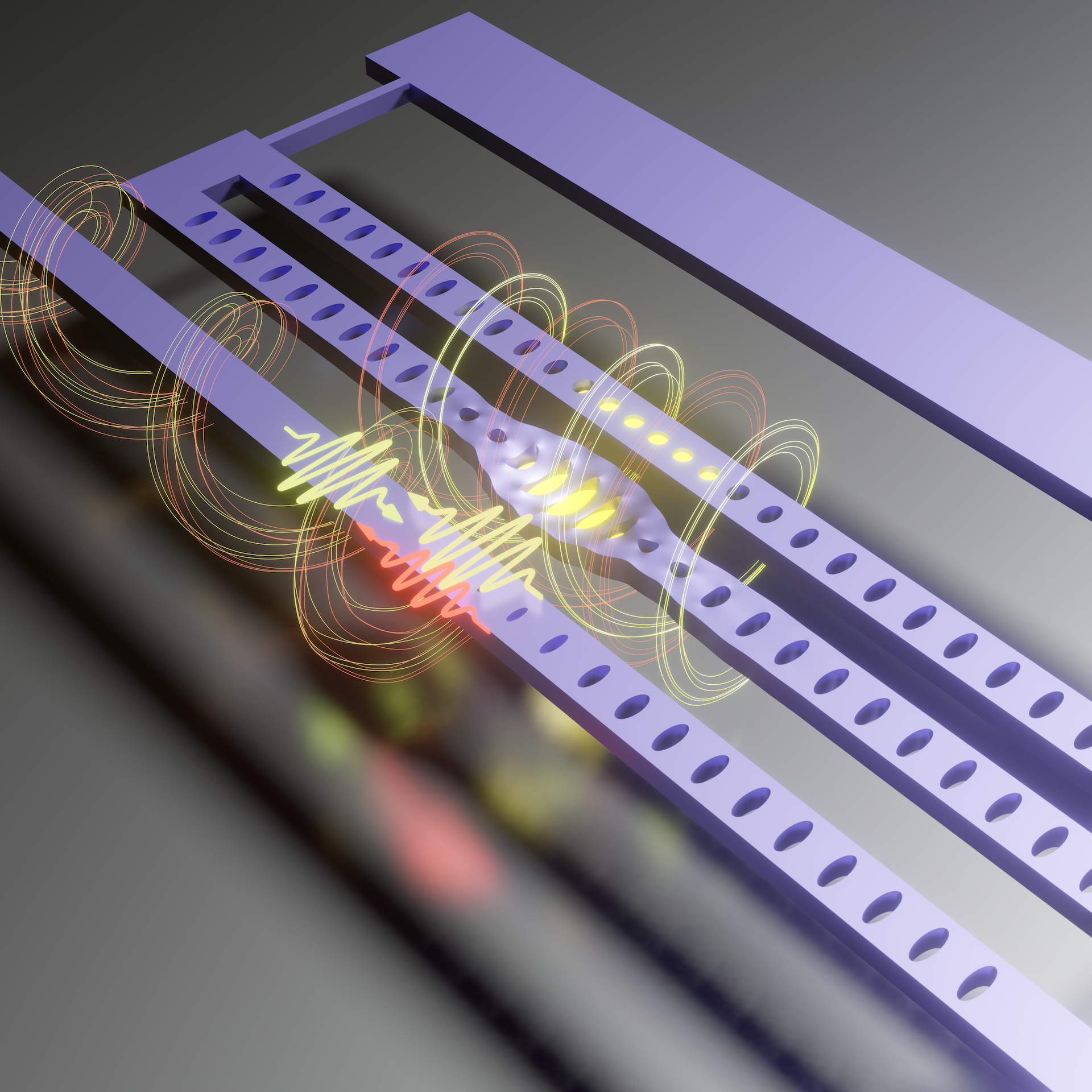New connections enable long-distance quantum networks
Quantum scientists from Campinas University in Brazil and Delft University of Technology have developed an optomechanical system that uses dissipative interactions to coherently convert between microwave mechanical excitations and optical signals. The possibility to transmit information in a quantum-coherent fashion is key to the development of large-scale quantum networks. These networks are essential for computing and communication technologies. The results were published in the journal Nature Communications.
The key to the researchers’ success lies in the use of nanometre-sized optomechanical cavities. These tiny devices enable the interaction of high-frequency mechanical vibrations and infrared light at wavelengths widely used in the telecommunications industry, paving the way to connect radically different frequency domains to each other. This is particularly important for connecting quantum computers to each other in long-distance networks. Optical fibres allow transmitting information in the form of photons over long distances with low noise and signal loss.
High-frequency nanomechanical resonators
One of the central innovations of this study is the introduction of dissipative optomechanics. Optomechanical resonators are where small vibrations in the quantum circuitry called phonons transfer their information to photons that can travel along optical waveguides. While traditional optomechanical devices rely on purely dispersive interactions, the researchers demonstrated that a dissipative approach, where photons are directly scattered from a waveguide to a resonator, offers greater control over the acousto-optic interactions.
Breaking frequency barriers
So far, dissipative optomechanical interactions had only been demonstrated at mechanical frequencies that are too low to be used for long-range optical transmission of quantum signals. By combining two carefully detuned resonators, and coupling them to an optical waveguide, the researchers succeeded in increasing this dissipative frequency regime by two orders of magnitude while also increasing the dissipative optomechanical coupling rate tenfold compared to previous attempts. These achievements represent a significant advance in the field of optomechanics and open doors for the development of even more effective coupling devices.
Vastly unexplored
The waveguide-resonator scattering process developed by the researchers remains vastly unexplored. The team, which includes Simon Gröblacher of the Department of Quantum Nanoscience, expects it can eventually be used to individually manipulate mechanical modes and mitigate unwanted optical nonlinearities and absorption.
Publication details
Dissipative optomechanics in high-frequency nanomechanical resonators, A.G. Primo, P.V. Pinho, R. Benevides, S. Gröblacher, G.S. Wiederhecker, and T.P. Mayer Alegre. Nat. Commun. 14, 5793 (2023). DOI: 10.1038/s41467-023-41127-7

